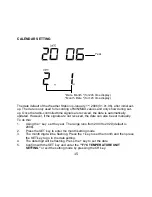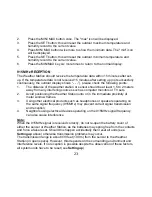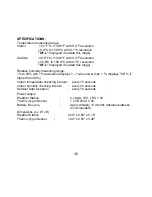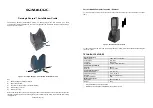
11
continuously throughout the United States at 60 kHz. The signal can be received up to 2,000
miles away through the internal antenna in the Wireless Weather Station. However, due to the
nature of the Earth’s Ionosphere, reception is very limited during daylight hours. The wireless
weather station will search for a signal every night when reception is best.
The WWVB radio station receives the time data from the NIST Atomic clock in Boulder,
Colorado. A team of atomic physicists is continually measuring every second, of every day, to
an accuracy of ten billionths of a second per day. These physicists have created an
international standard, measuring a second as 9,192,631,770 vibrations of a Cesium-133 atom
in a vacuum. For more detail, visit http://www.boulder.nist.gov/timefreq.htm. To listen to the
NIST time, call (303)499-7111. This number will connect you to an automated time,
announced at the top of the minute in “Coordinated Universal Time”, which is also known as
Greenwich Mean Time (GMT). This time does not follow Daylight Saving Time changes. After
the top of the minute, a tone will sound for every second. It is possible that your wireless
weather station may not be exactly on the second due to the variance in the quartz. However,
the clock will adjust the quartz timing over the course of several days to be very accurate;
under 0.10 seconds per day.
MANUAL SETTINGS:
The following manual settings can be done in the setting mode:
•
LCD contrast setting
•
Time zone setting
•
Daylight saving time setting
•
Time reception ON/OFF setting
•
12/24-Hour setting
•
Manual time setting
•
Calendar setting
•
°F/ °C setting
•
Weather forecasting icon sensitivity setting
Press the SET key to advance to the setting mode:












































